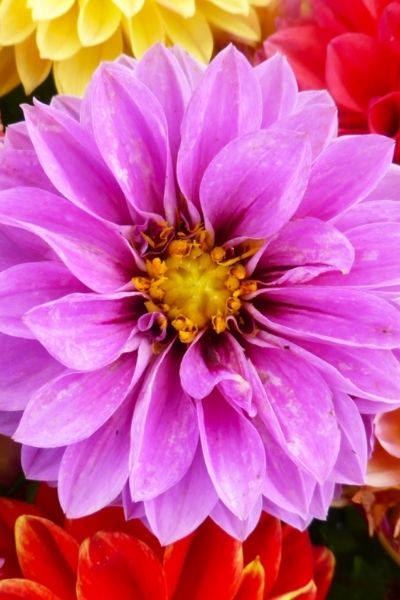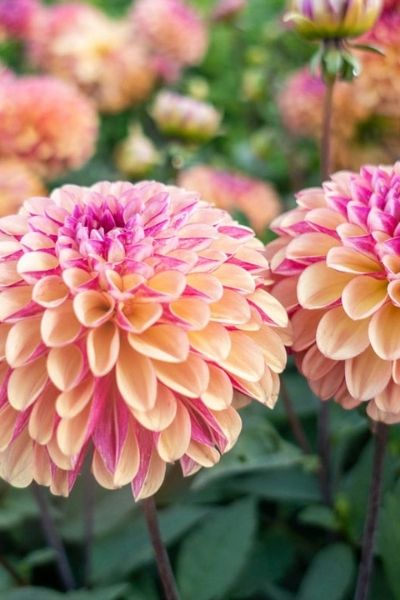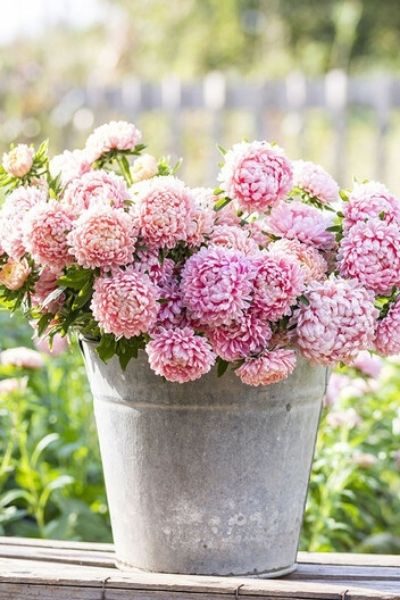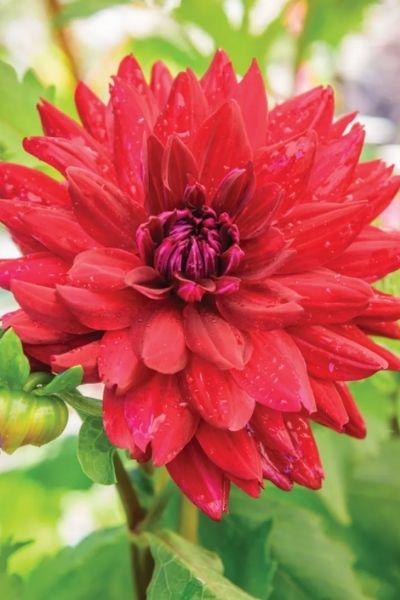Dahlias - when to plant them, how to grow them and expert advice for getting the best blooms
Big and blowsy dahlias are the super stars of the cutting garden. And this expert guide to looking after them will mean you can enjoy them all summer long
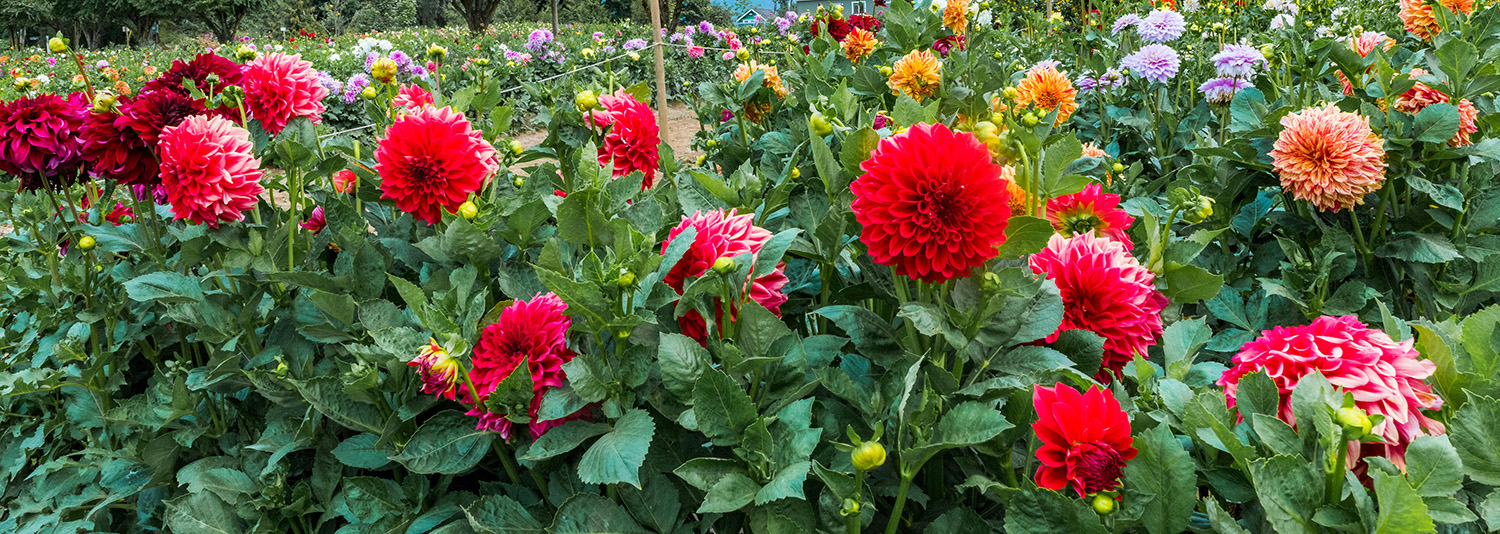
Dahlias are something of a superstar. They come in a huge range of sizes, shapes and colors and can be grown in ways that work in both yards both big and small. Thankfully, they’re not too demanding to look after if you have a few tricks up your pruning glove, and as well as looking fabulous outdoors you'll be able to fill vases with them for indoor displays through summer into autumn.
Essentially dahlias are s perfect staple of many flower bed ideas. ‘Supremely easy to grow and utterly marvellous to arrange, they are, without doubt, my favourite plant,’ says dahlia enthusiast Sarah Raven. ‘The first dahlia I grew was ‘Rip City’, bought from the nursery at Monet’s garden in Giverny. I love its plush texture and the rich, dark crimson-black of its flowers. That’s where my affection for dahlias started, affection that’s now grown to fanaticism and justly so. This family contains the best garden plants you can grow.’
We couldn't agree more. There’s a vast range to choose from. There are water lily dahlias with saucer-shaped blooms, pompom designs with petals scrunched into balls, anemone types with pincushion hearts, spiky cactus styles, ones that look just like peonies and even orchid varieties with star-like petals. They come in every color too from hot pink, orange and red to faded coral, soft lilac, blush and café au lait.
Here's everything you need to know to get started on growing dahlias.
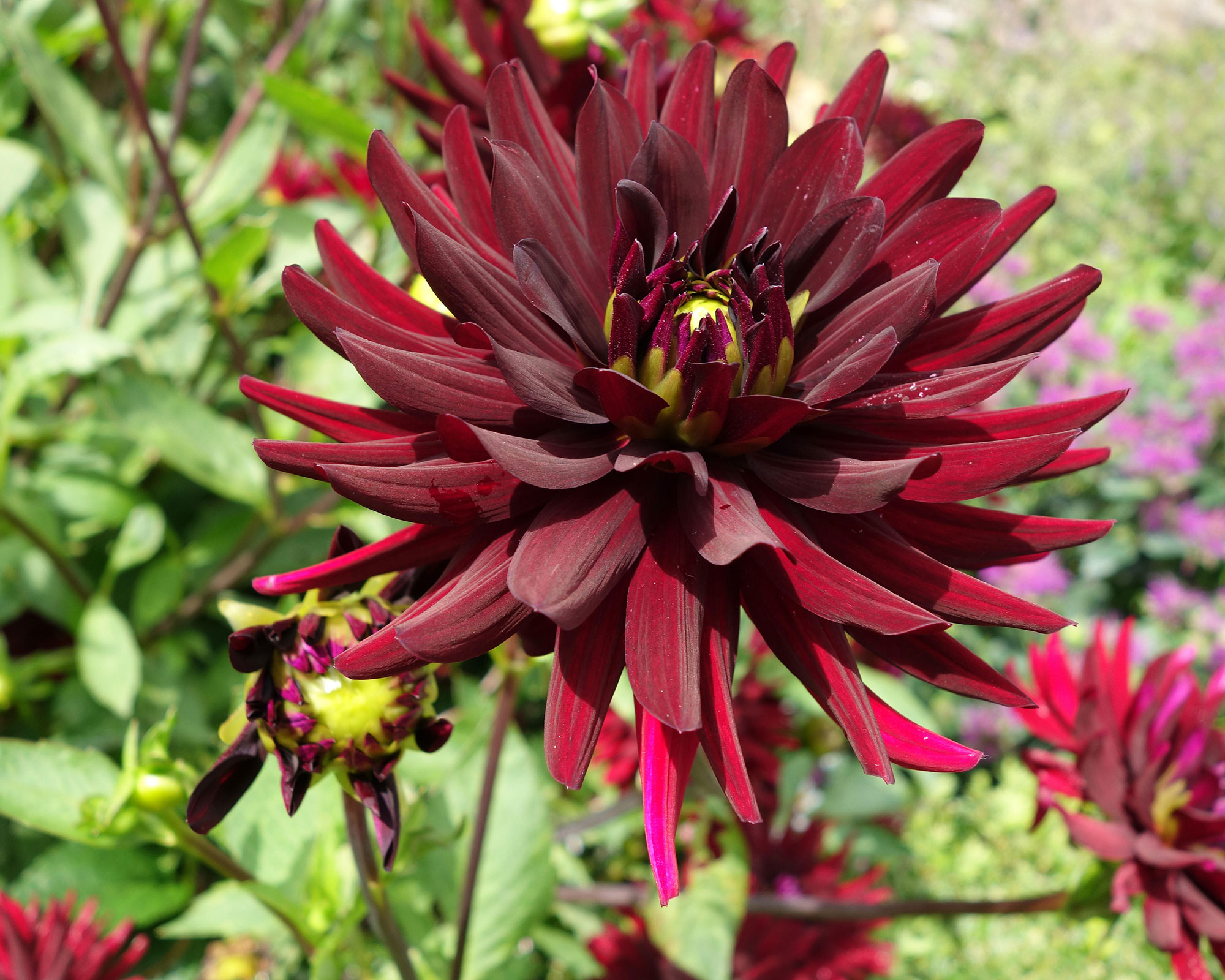
Dahlia 'Rip City' is one of Sarah Raven's favourites and ours too. It's an eye-catching deep crimson with wavy petals and an almost black heart
How to plant dahlias from seed
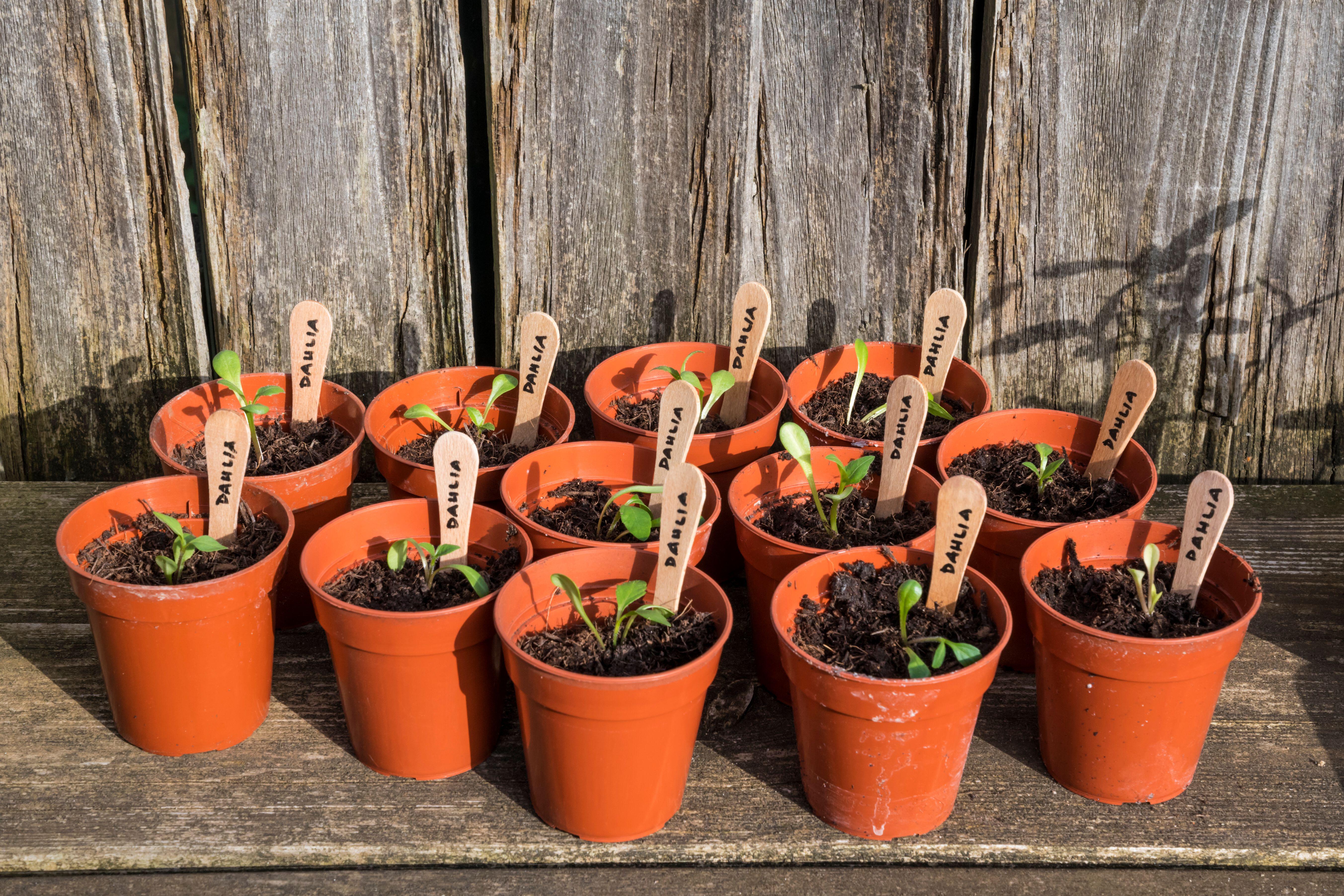
Dahlias are easy to grow from seed and like to be started off indoors in Spring. Livingetc's editor Pip Rich, the author of several plant books, tried his hands at growing dahlias from seed last year, and here's what he learned.
'Take a tray about 2 inches deep and fill almost to the top with potting compost,' Pip says. 'Then place dahlia seeds carefully on top of the soil, with around 2 inches of space between each one. Sprinkle a little potting compost over the top to fill the tray to the brim.' So far, so simple.
'Next, take a glass jar and roll it across the top of the compost, pressing down firmly. This makes sure each seed is really covered and embedded in the soil,' Pip says. 'Water lightly with a watering can and place in a warm dry spot - a sunny windowsill is ideal. You should see the first shoots appear in about a week's time.'
Once the sprouts are about four inches tall, carefully dig them out of the soil, being mindful not to destroy the roots, and plant into individual pots. 'You can keep them indoors in their pots until they're around 20 inches high, when it's time to plant them out,' Pip says. 'Just water them lightly every four or five days to keep them moist but not too wet,' he adds.
There's more advice for planting them out - and staking them - below.
How to plant dahlias outside

One of the easiest flowers to grow, all you need for an abundant supply of dahlias are a few basics: rich soil, good drainage and plenty of sun. Dahlias also like well-drained soil so plant them in raised beds if your garden tends to get waterlogged.
Plant dahlias in the sunniest spot in the garden, and add plenty of compost and fertiliser. Spread the compost over your beds, then scatter a general fertiliser on top. Then work it all into the soil, mixing well as you go. Take the shoots you've started off indoors as per Pip's tips above, and plant them so the roots are well covered.
Give each dahlia a minimum of around 35 inches on each side to spread out. You don't need to water regularly until it starts to get really warm, or the tubers could rot. Dahlias need a lot of watering during the growing season. How much exactly depends on where you live and what's happening with the weather.
Harvest dahlia blooms regularly and provide plenty of support with stakes.
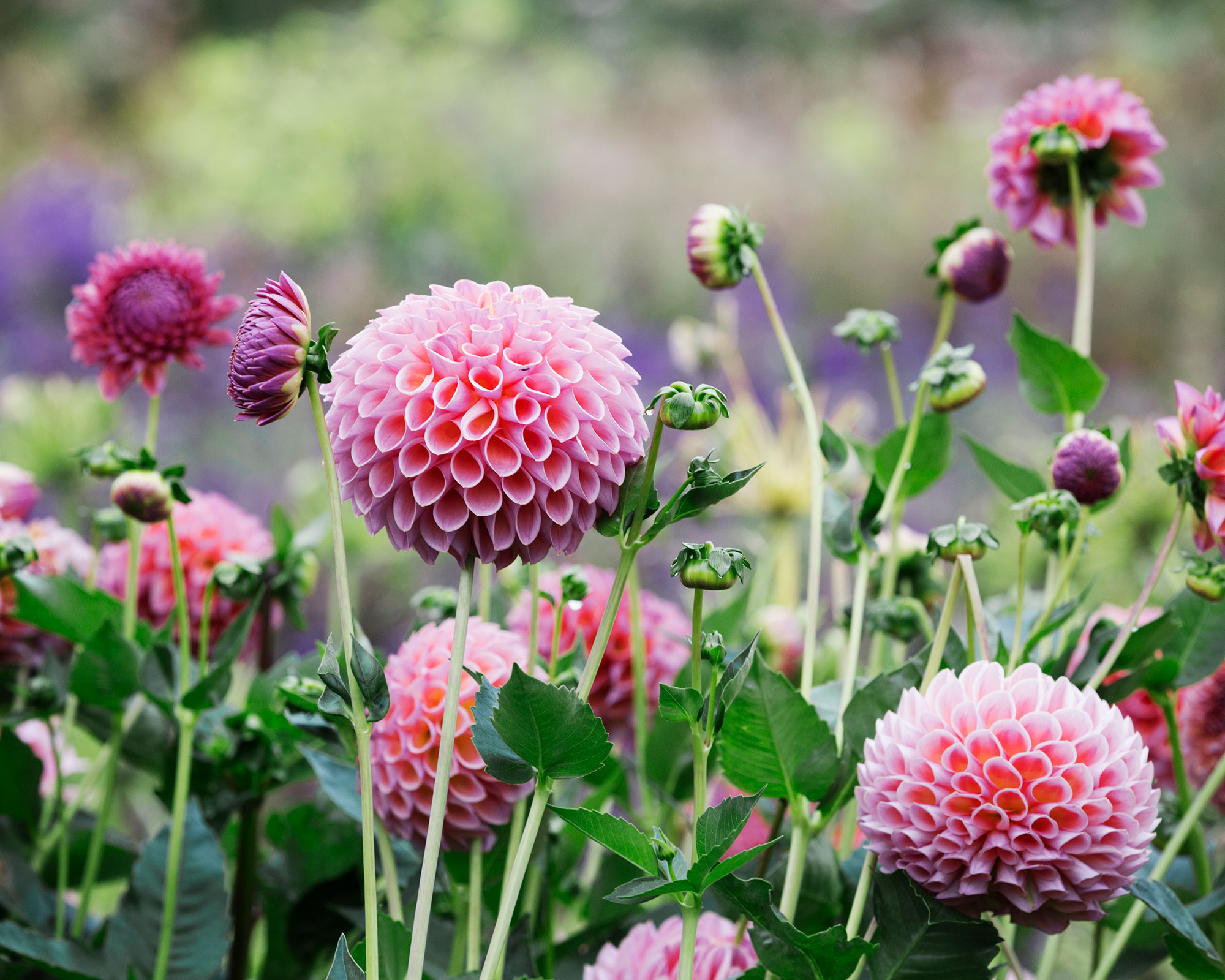
These pompom dahlias add a note of gaiety to the garden
Can I grow dahlias in pots?
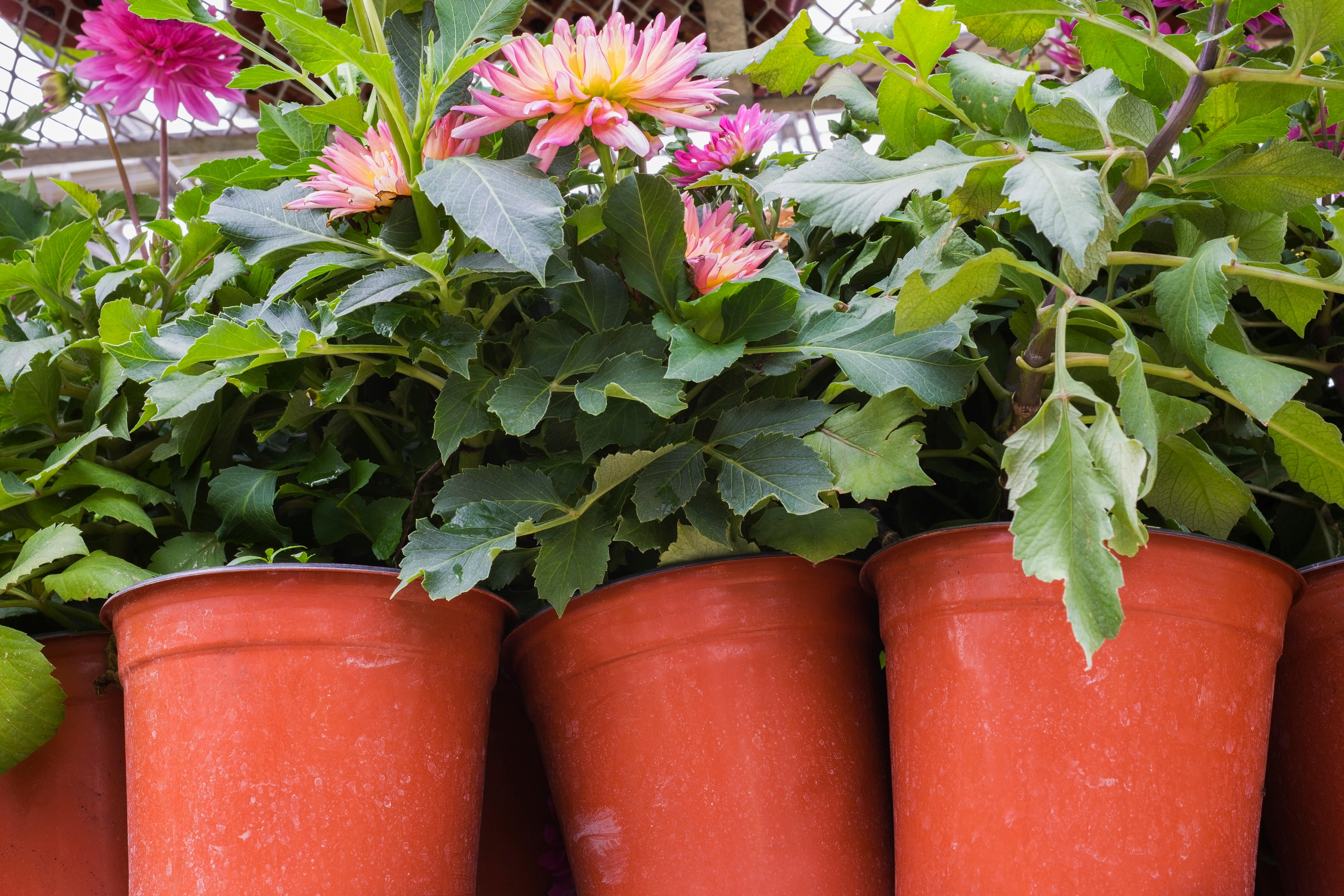
Dahlias are a big part of modern flower trends because if you don’t have much space you can plant dahlias in large pots. Galvanized tubs will work perfectly (aim for 12 inches deep by 24 inches wide).
If you’re growing dahlias in pots, be sure to choose shorter varieties that only grow to about 35 inches tall such as scarlet 'Bishop of Llandaff' so the pots aren't top heavy.
Keep in mind that when you grow any plant in a container, it will need more watering than if planted in the ground, especially when it’s hot. It will also need fertilising once a month with a liquid feed.
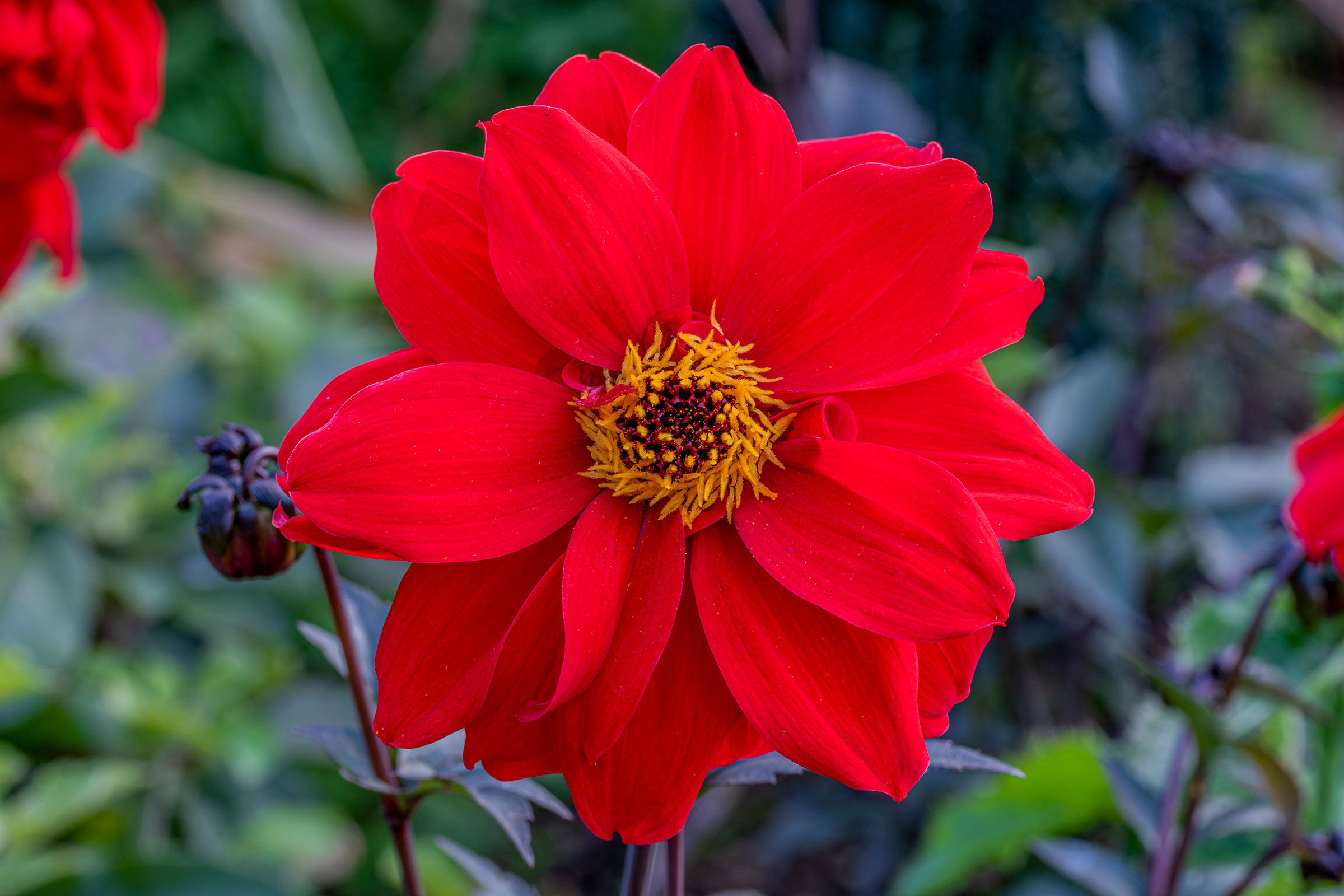
Dahlia 'Bishop of Llandaff' is ideal for pots as it grows to around 90cm only and is hard to beat, flowering from July until November
How to grow dahlias from tubers
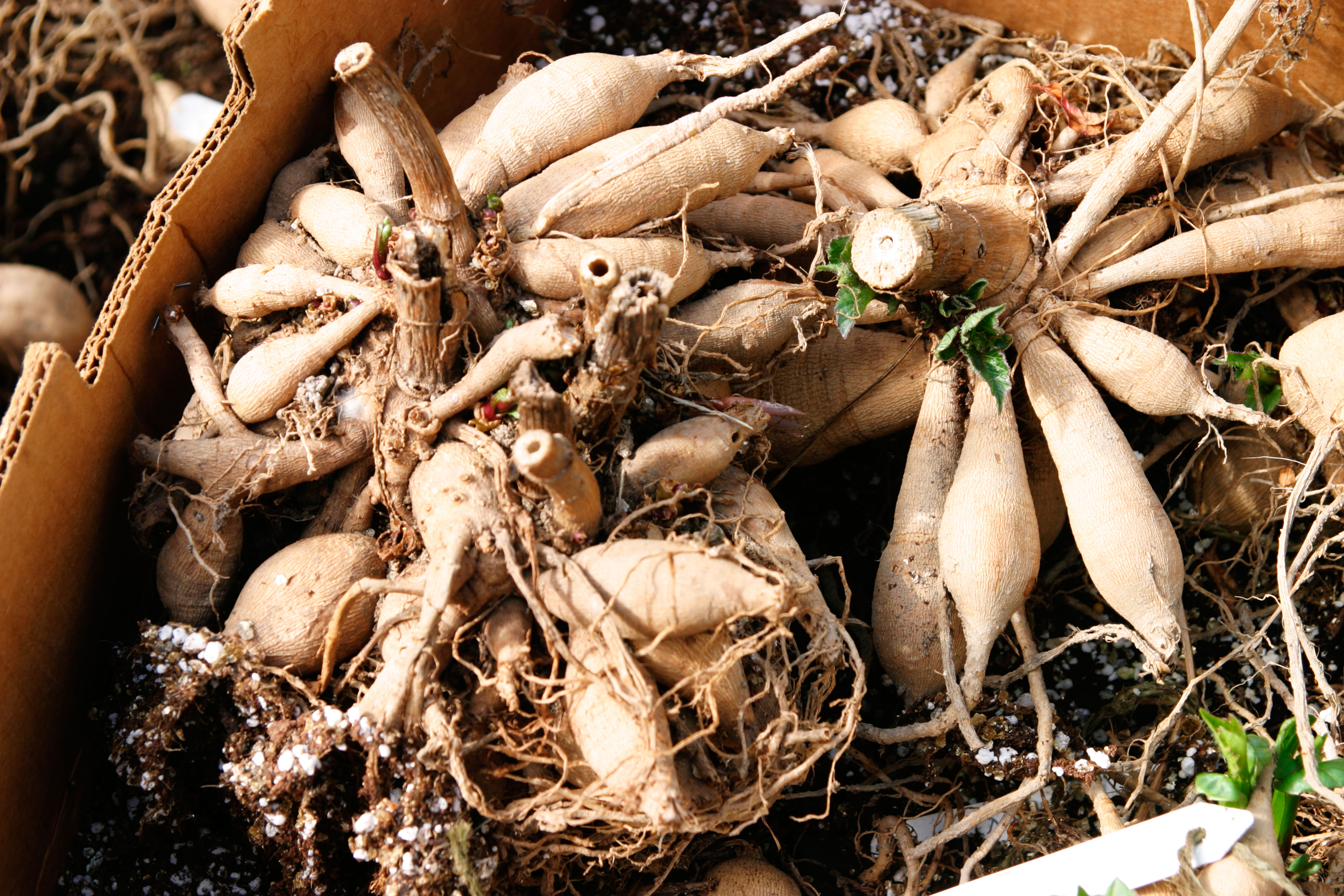
It’s usual to grow dahlias from tubers. Depending on how many tubers you’re planting, you can dig either a long trench or individual holes. Place each tuber horizontally with its growing eye facing up, around 4 inches deep, then cover with soil.
If you're planting dahlias from rooted cuttings, treat them like any other annual. Wait until after the weather has warmed up and any threat of frost has passed.
Add a thick layer of mulch around young plants to help keep the soil moist and cut down on time spent weeding. Shredded leaves, straw or dried grass clippings are all great choices for mulching.
Then all you need to do is remember to water and feed them regularly.
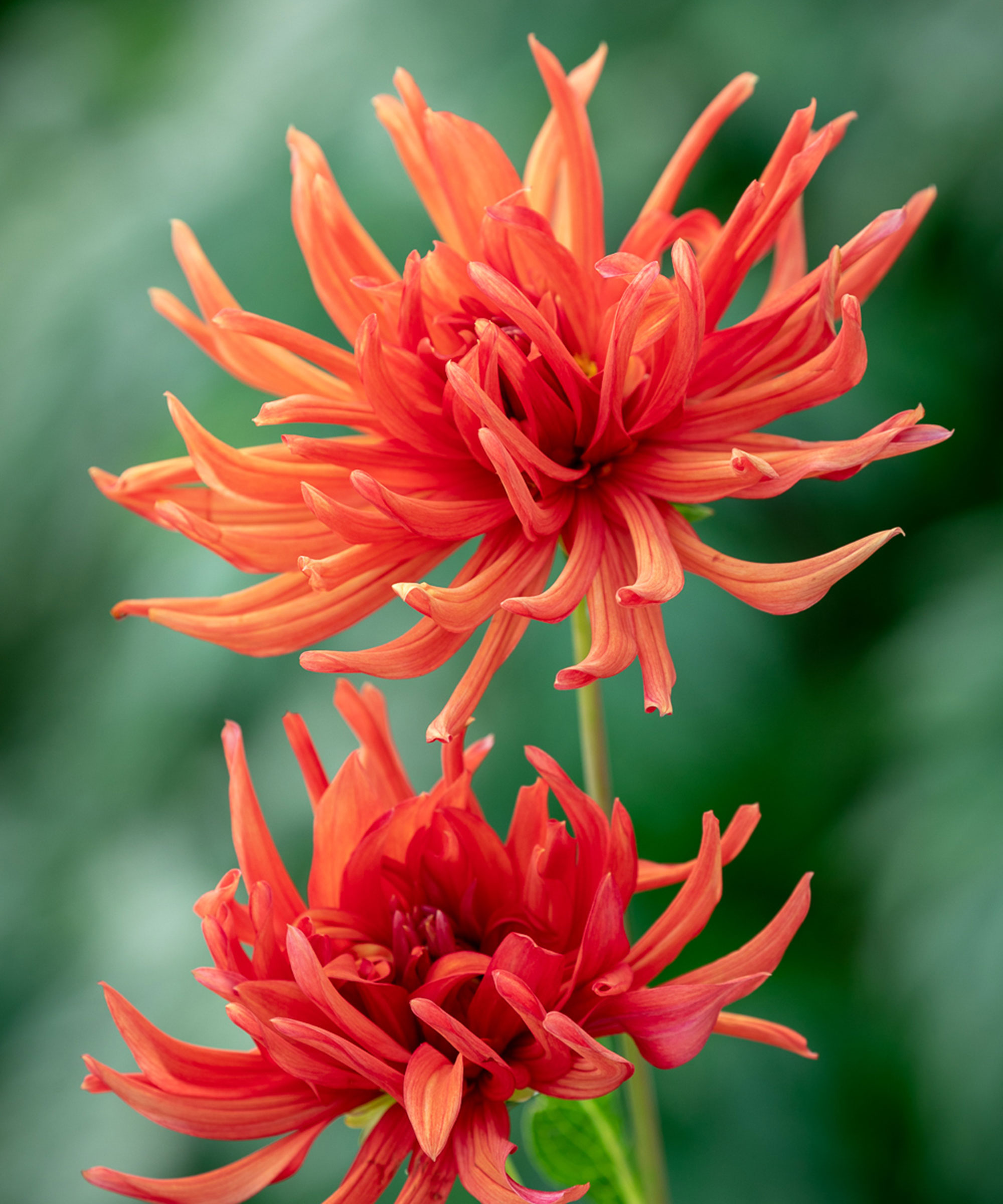
Dahlia 'Autumn Orange' is a luscious coral colour and the spiky petals add an exotic quality. It's one of the cactus varieties of dahlia
Do I need to stake dahlias?
Just like in sunflowers care, if your dahlias are growing well they will probably need staking to stay upright as once they gain decent height their showy blooms can make them top heavy and they will flop over in a stiff breeze.
As the plants grow, use twine to tie them individually to stakes to support the growth. Alternatively run double or triple twine along the outside of rows and stake at the end to form a sturdy enclosure to support your dahlias.
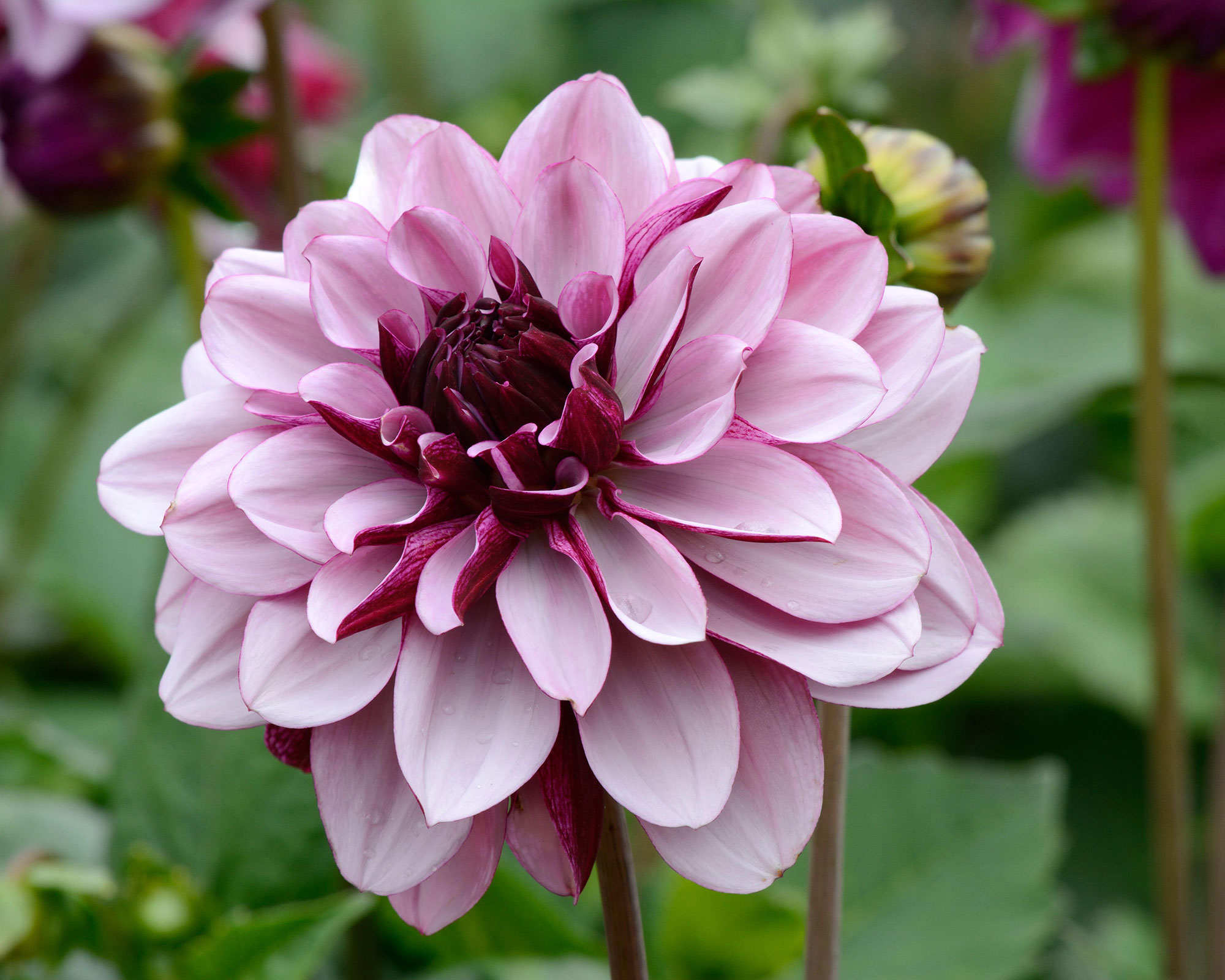
Dahlia 'Creme de Cassis' flowers reliably from July through to November. It needs supporting with a stout stick to stop it toppling
How do you take care of dahlias?
Fortunately dahlias are easy to grow. But there are one or two things that you need to be aware of to keep your dahlias healthy and thriving.
The most common disease in dahlias is crown gall. This looks like a round growth on the tuber that appears above the soil. If your plants become affected by this you will need to throw them away, otherwise the disease could spread to other plants and destroy them too.
Another telltale sign that your dahlias are ailing is yellow streaks or spots on leaves, as well as stunted growth. Check your plants regularly and remove any that are underperforming.
Fungal diseases such as powdery mildew and leaf spot are spread by airborne spores. The best way to prevent these problems is by making sure there is good airflow around your plants.
Slugs and snails are the biggest threat to young dahlias. Use an organic option to deal with them. Earwigs will love to eat your blooms too. Again, use an organic method to zap them. Aphids can be dealt with the organic way too
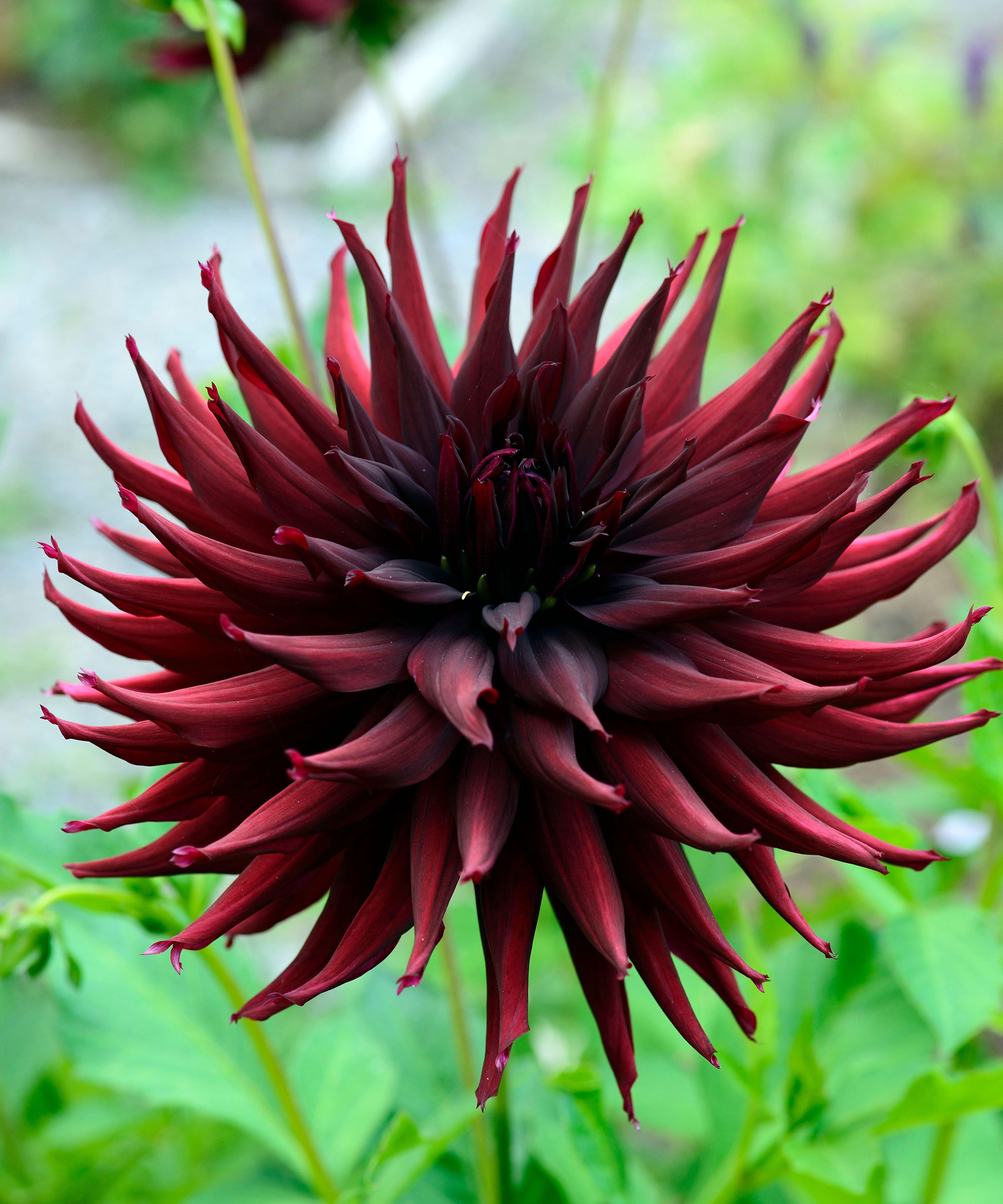
Dahlia 'Black Narcissus' is another spiky cactus variety. One of the darkest shades, it adds drama with its inky good looks
How to pick dahlias for indoors
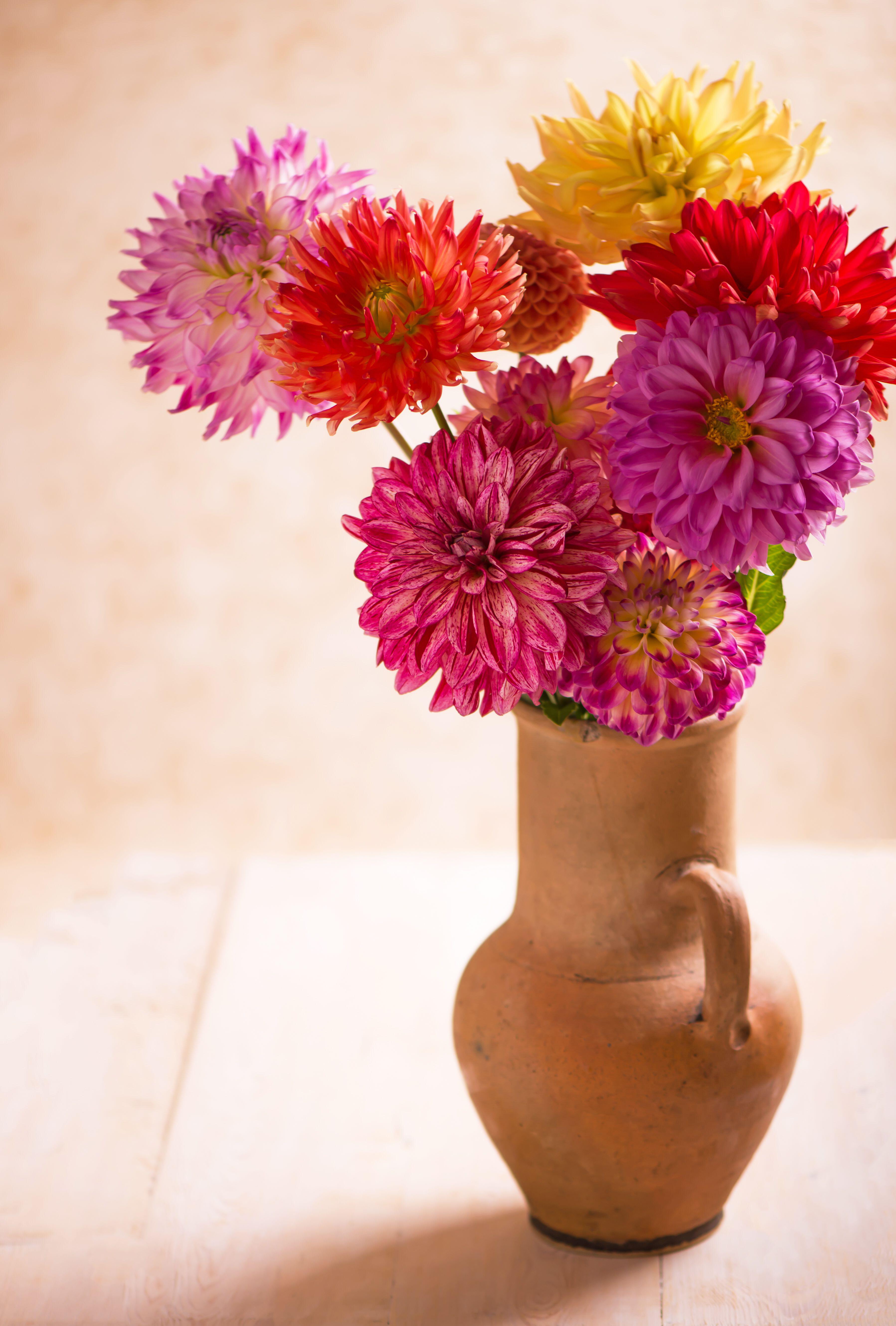
The more you pick, the more flowers you’ll get popping up to replace them, the reason they feature so often in modern garden ideas. This is a good thing as dahlias are not a particularly long-lasting cut flower, only looking good in a vase for about 5 days.
Cut them when they’re almost fully open. Choose firm looking blooms. If they feel a little papery they’re too old to pick and will shatter immediately.
If you cut long stems the plant will send out more branches at the base to produce more flowers so don’t be afraid to remove too much of the plant when you're choosing what to pick.
'I normally cut first thing in the morning, really early, that’s when at they’re happiest,' says the florist and cut flower specialist Kitten Grayson. 'Try and avoid cutting once the sun starts rising - or do it last thing at night when it's gotten cool again.'
Kitten says it's important to give every cut flower a really good drink before putting it into an arrangement. 'Stand them in deep water and put them in the shade,'she advises. 'Then, two hours later they'll be ready to move into how you're going to arrange them. Just always then use fresh water, and a fresh vase.'
Add flower food to the vase to help the flowers last longer. Alternatively make sure you change the water every other day. Freshly cut dahlias last longer when kept away from heat and bright light.
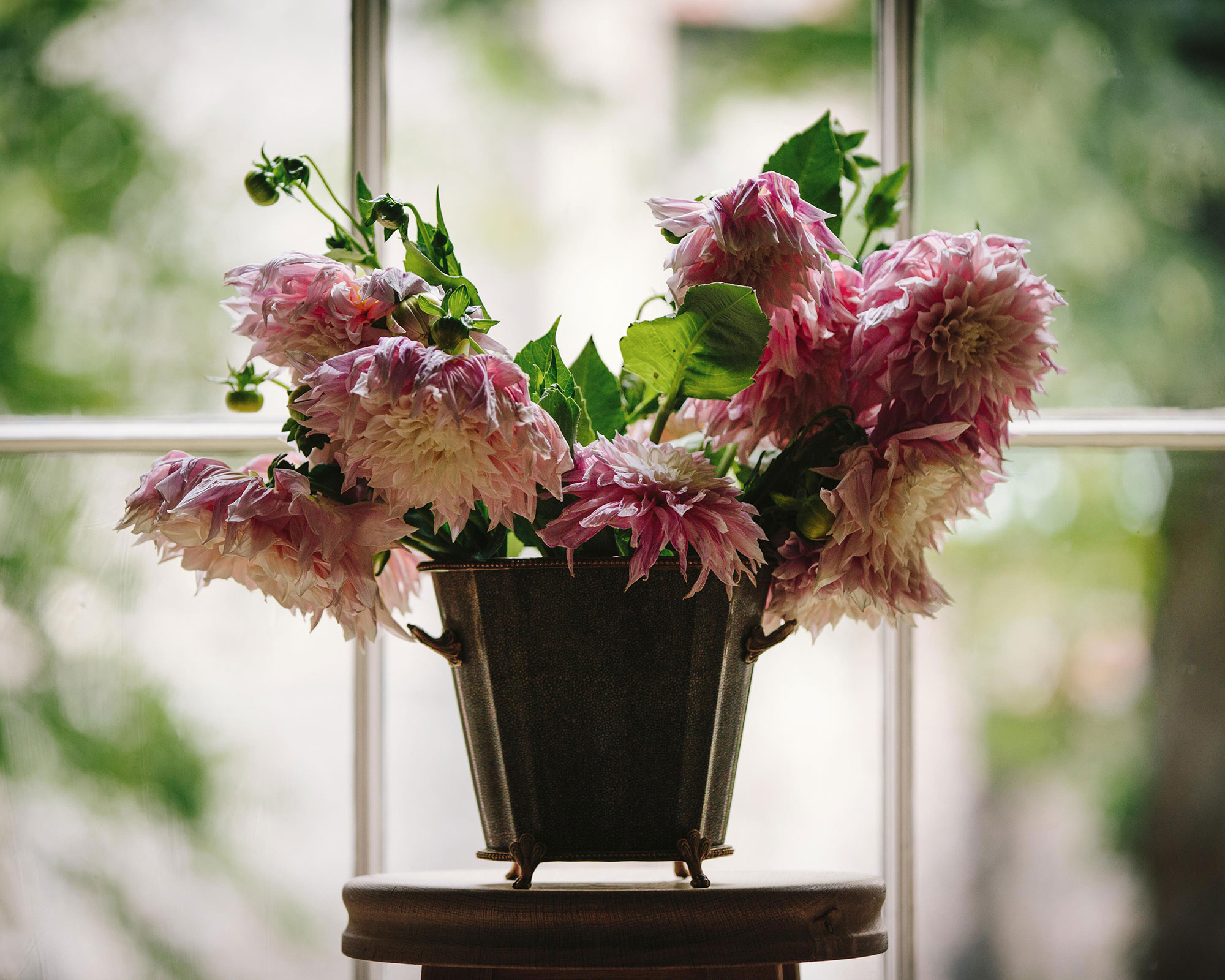
Cut dahlias rock an urn
Do dahlias need deadheading?
Yes, dahlias should be deadheaded regularly. Remove any spent blooms so that plants continue to pump energy into producing flowers rather than making seeds. This will lead to more blooms.
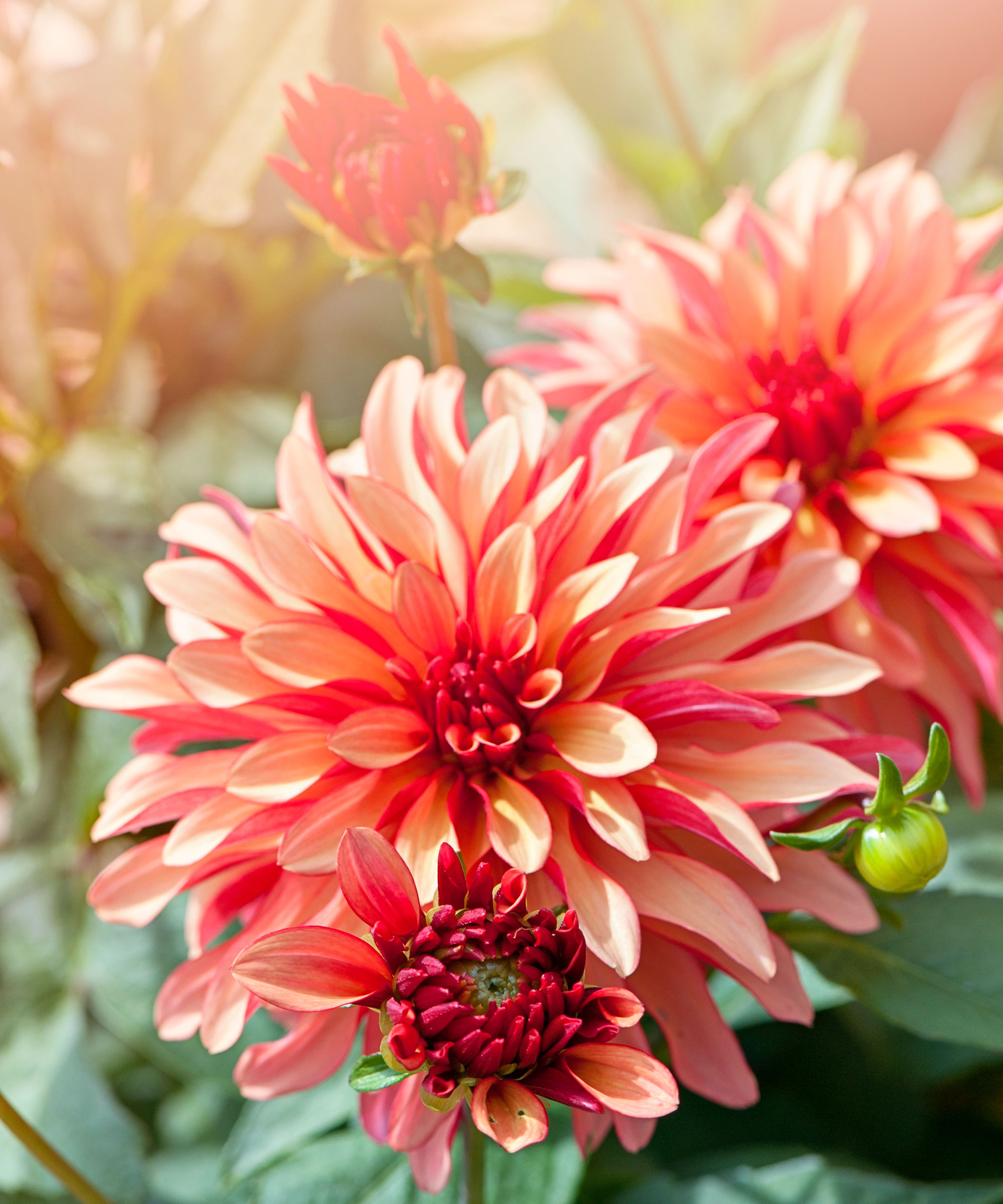
Dahlia 'Art Deco' is a dwarf variety that produces stunning orange flowers with red highlights. Their compact habit makes them ideal for containers, and they bloom prolifically throughout summer
Can I overwinter dahlias in the ground?
‘Climate change and mild winters means that dahlias can be treated much like a perennial,’ says Sarah Raven. ‘In all but the coldest, highest spots, they can be left out in the garden throughout the winter.’
If you live in a mild climate you can leave dahlias in the ground through the cold months. Cut back the foliage to the ground then spread a layer of mulch over the plants. You may need to put down some pest control though as slugs and snails love hiding in mulch.
If you’re not sure about overwintering in the ground you could try a mix of doing it this way and lifting tubers too.
If you experience cold winters you will need to dig up dahlia tubers.
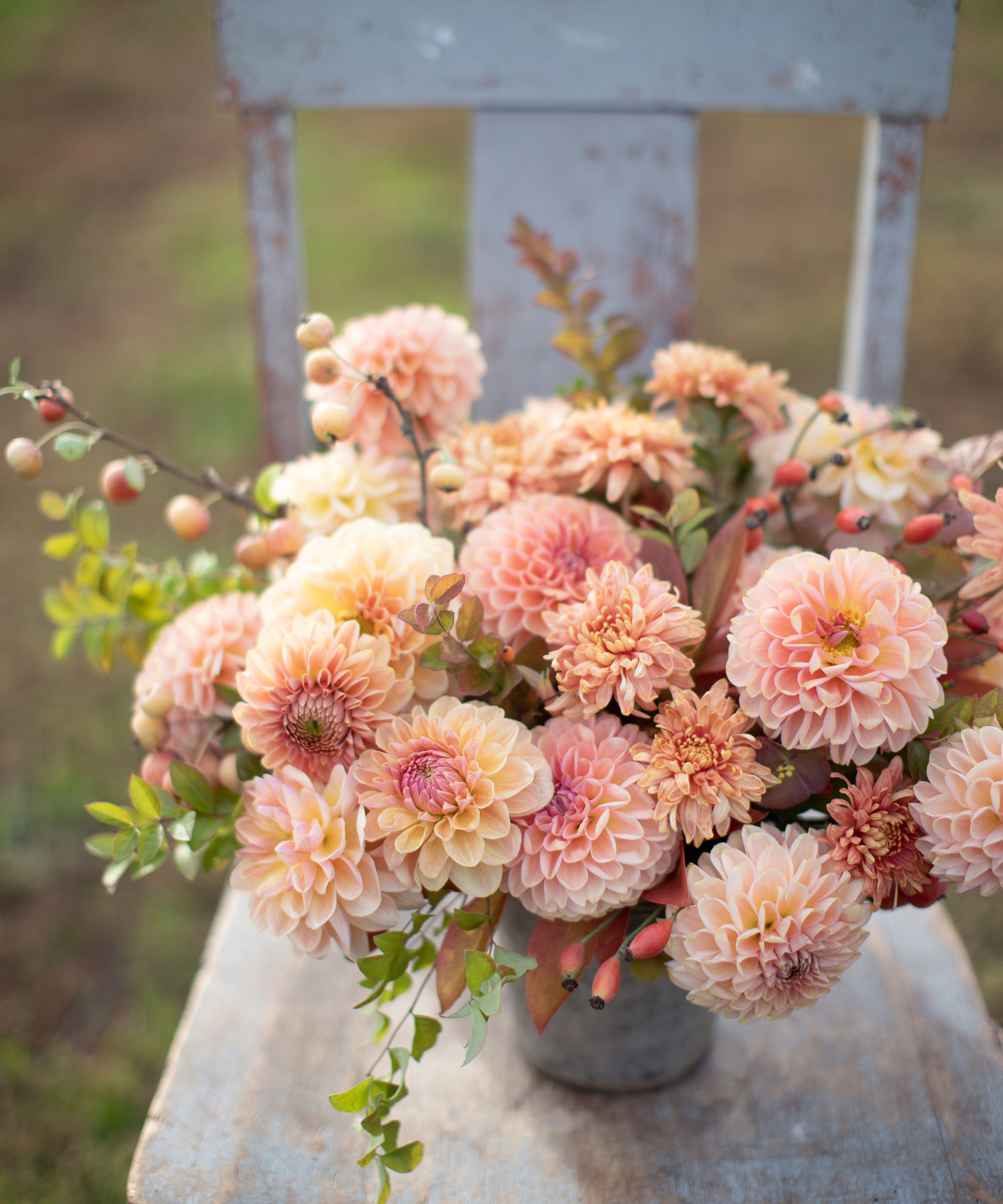
For an invaluable guide on everything you need to know about growing dahlias, don't miss Discovering Dahlias by Erin Benzskein
How to dig up dahlia tubers
If you experience cold winters and don’t dig up dahlia tubers they won’t survive. If you pull up dahlias while they’re still actively growing or immediately after the first frost, the skin on the tubers won’t have had enough time to toughen, so wait until after the first hard frost. This will avoid the tubers shrivelling in storage.
Remove the tubers carefully from the soil. Take care when pulling clumps out of the ground, since they can be fragile and break easily. Shake off the excess dirt from the clumps, taking care not to damage them.
Store tubers in a cool, frost-free place, then divide closer to planting time in spring. Don’t forget to label them.
Plastic crates work well because they allow excess dirt and moisture to escape and are easy to pick up.
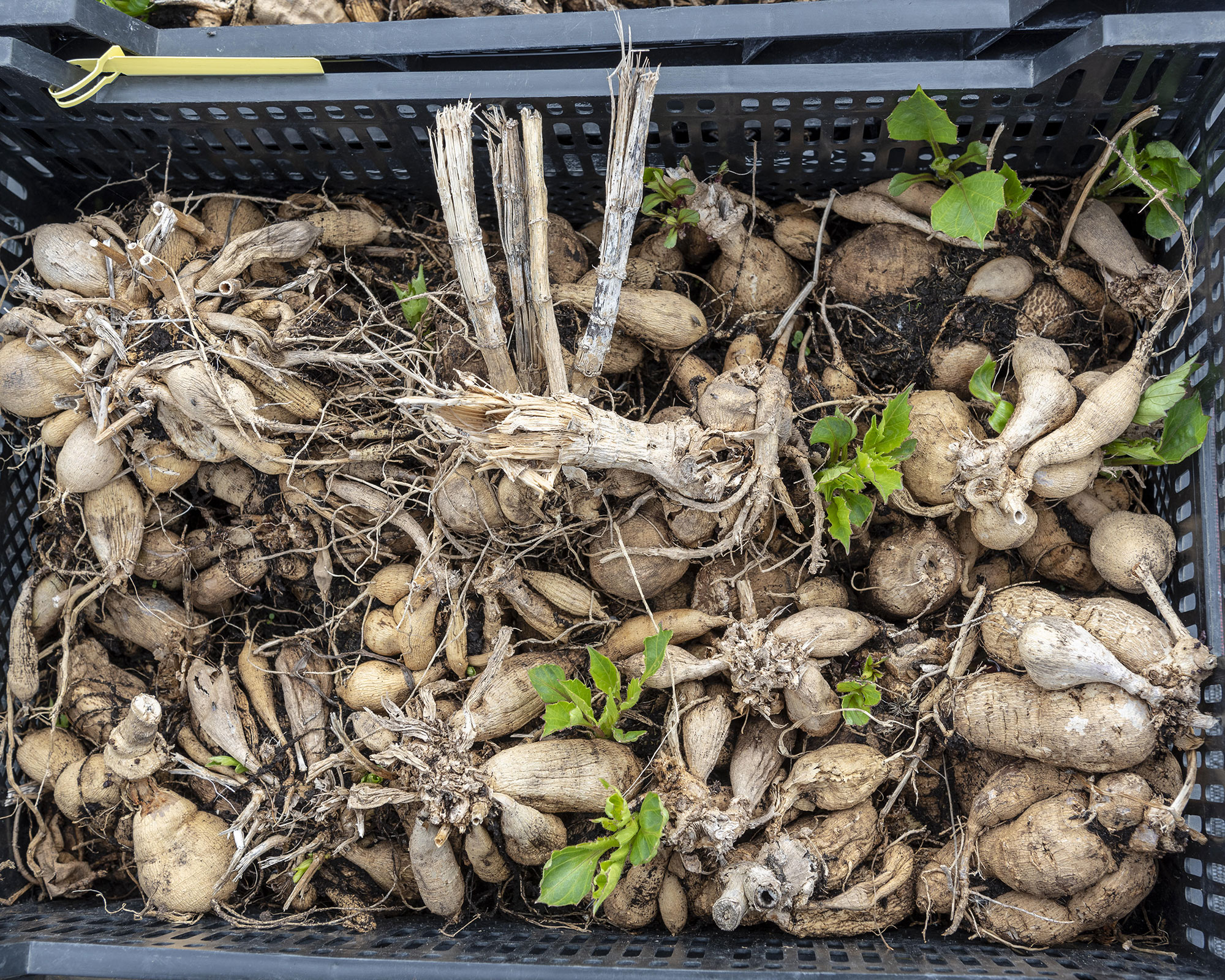
If you live in a cooler climate you will need to dig up dahlia tubers at the end of summer and overwinter them under cover
How to get more dahlias
Dahlias are great for making more out of the ones you have. ‘Their incredible ability to multiply over the course of a growing season is unmatched: you can start with a single tuber or rooted cutting, and by season’s end be digging a full clump that contains 3 to 10 babies from the original plant,’ says Erin Benzakein, author of Discovering Dahlias.
‘Similar to a sourdough starter, once you have it and as long as you take care of it, you’ll have a steady supply to share with others and plant for yourself, every season.'
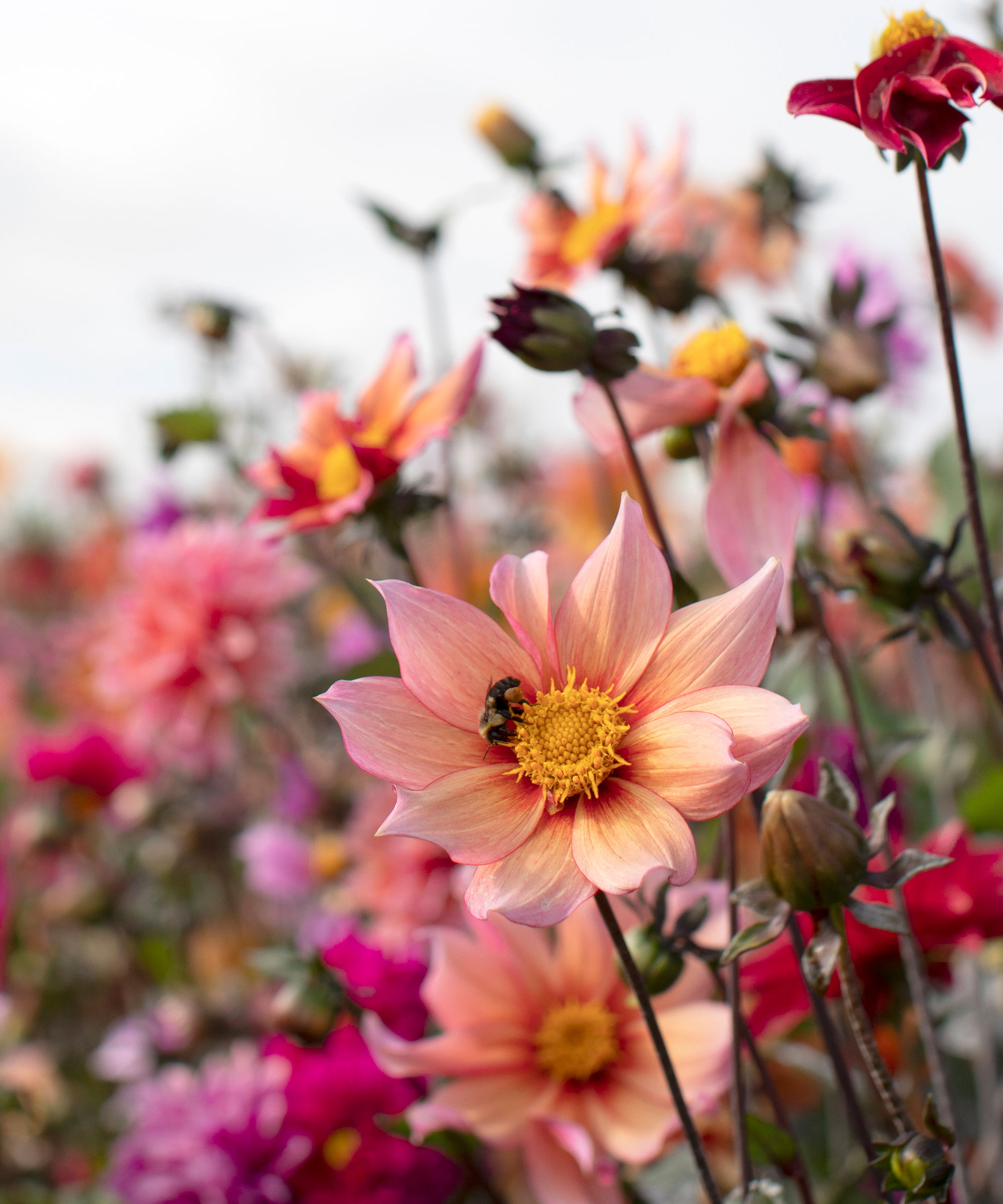
Erin Benzakein says dahlias are the flowers that keep on giving
How do I divide dahlia tubers?
First wash the clumps of tubers thoroughly with a spray attachment and leave them to dry.
When they’re clean and dry, use secateurs to split clumps in to quarters to make them easier to work with. Throw away any damaged tubers.
Start at the top of the clump and cut away individual tubers.
Make sure that each tuber has a visible eye, as this develops into a sprout. They should also be firm. Trim off the roots.
Let them dry for 24 hours before storing.
Pack the tubers in vermiculite in plastic bins. Check tubers every month or so during winter and dispose of any rotten ones immediately.
Can I take cuttings from dahlias?
One of the fastest ways to increase your dahlia stock is by potting up and bringing tubers into growth early, then taking cuttings as sprouts emerge. You can produce a large, healthy rooted cutting that’s ready for planting in about 6 to 8 weeks. Be sure to bring the dormant tubers into growth in spring to get new shoots in a few weeks.
Cuttings are tender and require a warm, bright space to thrive, so you’ll need a dedicated space indoors. A table or shelf with a heat mat and some inexpensive shop lights (LED or fluorescent) hanging from above will do the trick.
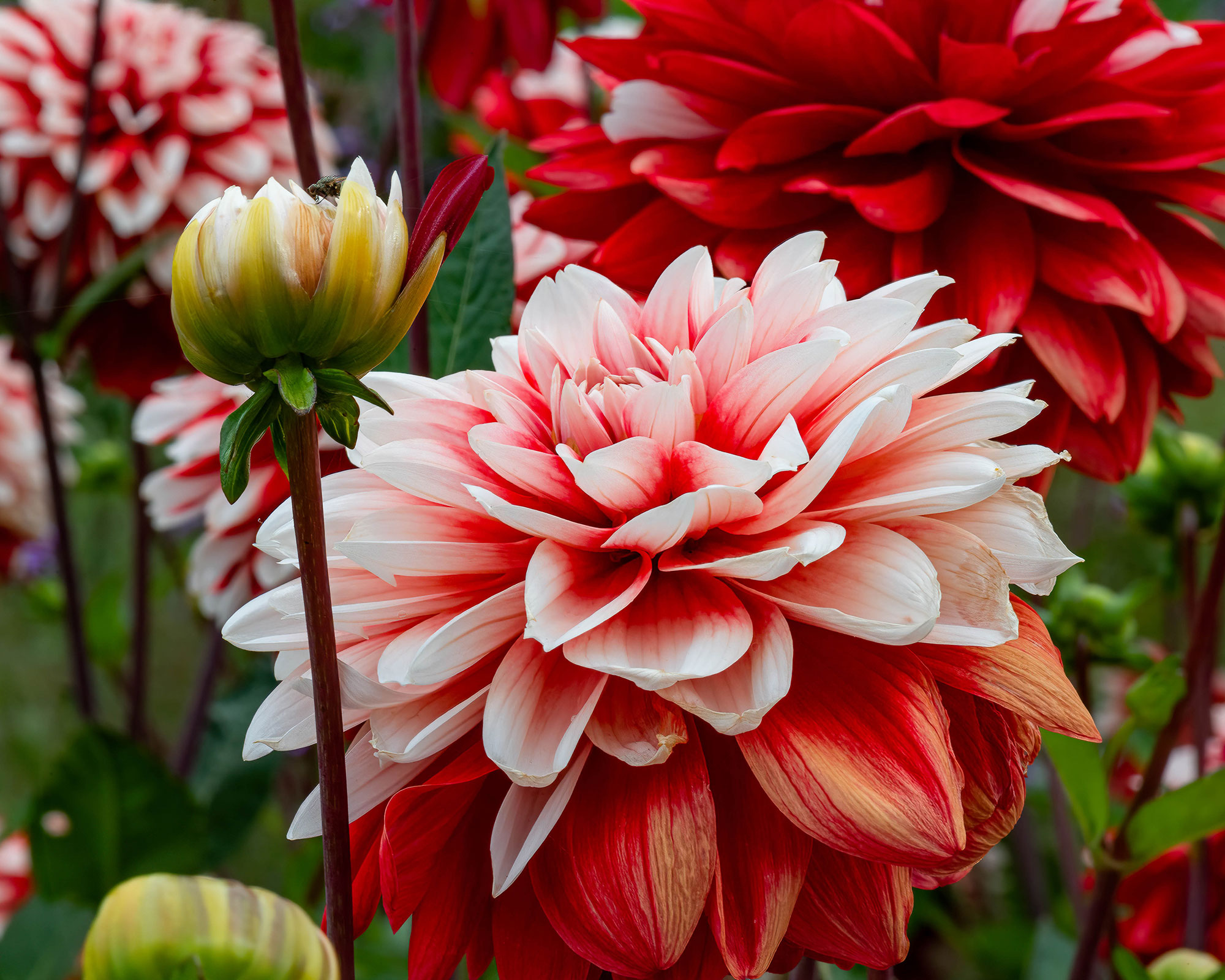
How to take dahlia cuttings
Floret Farm dahlia expert and author of Discovering Dahlias Erin Benzakein explains how to take cuttings to multiply your stock.
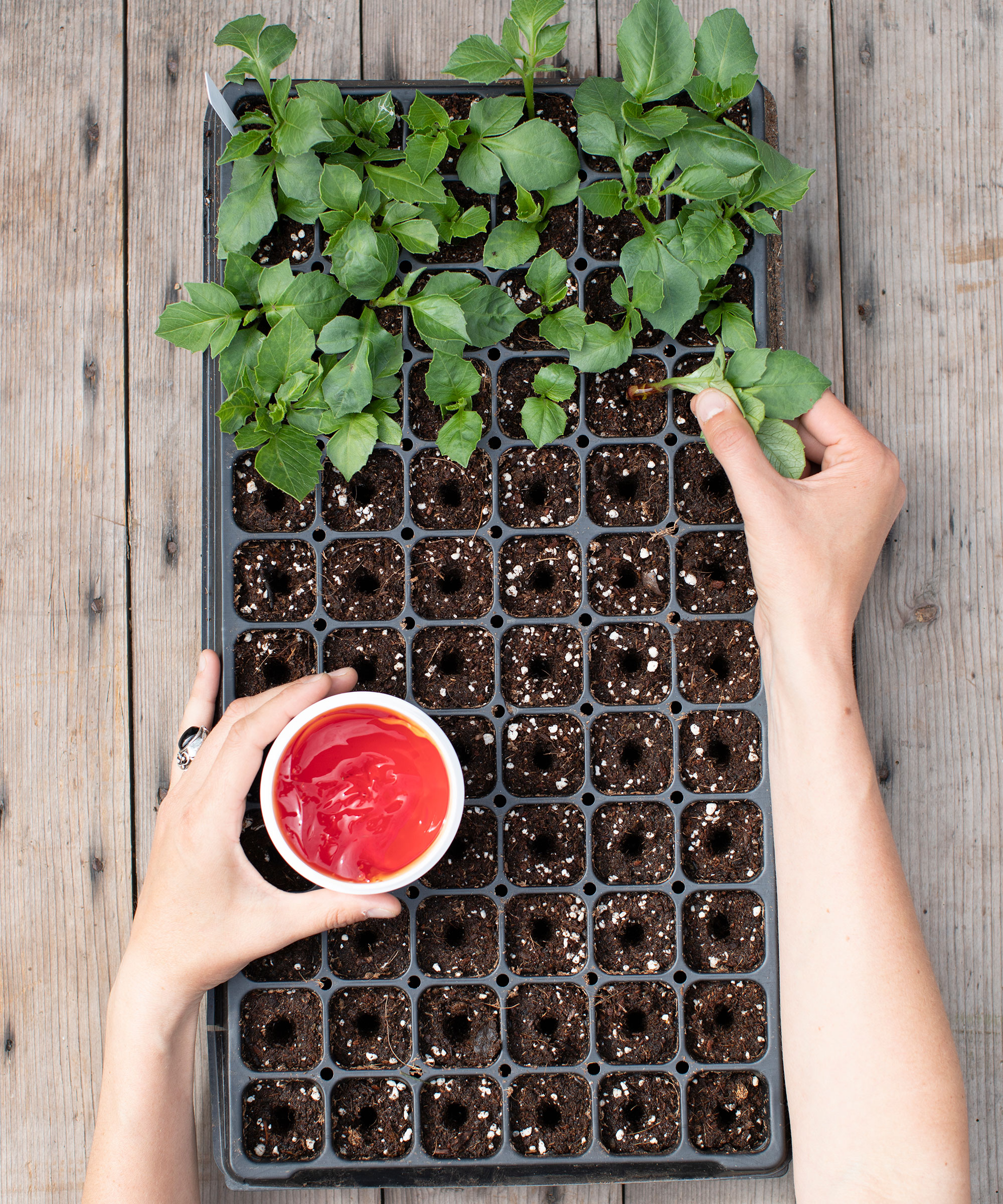
- Plant the tubers you want to multiply vertically in soil-filled pots, leaving at least 1 inch of the neck poking out of the soil. Label and put on a plant tray with drainage holes.
- Transfer the potted tubers to a warm place (64°F to 70°F). Once the eyes swell and sprouts begin to emerge (2-3 weeks), they should be moved to an area that stays warm and has plenty of light, such as a heated greenhouse, or indoors under lights.
- Once they’re 3-4 inches tall take cuttings. Use a knife to slice off the sprout. Make your cut flush with the tuber so you don’t cut out the growing eye.
- Once you have a small pile of cuttings, carefully remove the lower two to three sets of leaves from each so that you have at least 1 - 2 inches of cleaned stem to work with.
- Fill a plug tray with moist potting soil, and poke a hole in the centre of each cell, using a pencil or chopstick. Make sure your holes go all the way to the bottom of the tray. Dip the bottom 1 inch of the cleaned cutting into gel rooting hormone.
- Insert cuttings into the holes until they touch the bottom of the tray. This will ensure that they have contact with the heat mat and root more quickly.
- Add about 1 inch of water to your no-hole tray and place the tray of cuttings inside. Cover with the lid or alternatively mist the cuttings 3 to 4 times a day so they stay moist. Put the tray on a heat mat set at 70°F. Suspend the lights 1 - 2 inches above the top of the lid, and leave them on for 14 to 16 hours per day.
- Check cuttings daily and remove any that are ailing. Make sure to keep the water level in the tray 1 inch deep. It takes 12 to 14 days for cuttings to develop.
- Once the cuttings have enough roots to keep their soil intact move them into larger pots. Fill a small pot with coarse potting soil and make a hole in the centre. Slip the rooted cutting into the hole and press the soil firmly around the baby plant. After potting up the cuttings, water well, and place them back under the lights.
- After 3 to 4 weeks, the rooted cuttings should be ready to plant in the garden. Be sure to wait until all threat of frost has passed before planting outside.
Where to buy dalhia seeds?
Be The First To Know
The Livingetc newsletters are your inside source for what’s shaping interiors now - and what’s next. Discover trend forecasts, smart style ideas, and curated shopping inspiration that brings design to life. Subscribe today and stay ahead of the curve.
Lifestyle journalist Sarah Wilson writes about flowers, plants, garden design and trends. She has studied introductory garden and landscape design and floristry, and also has an RHS Level 2 qualification in the Principles of Plant Growth and Development. In addition to homesandgardens.com and livingetc.com she's written for gardeningetc.com, Real Homes, Modern Gardens and Country Homes & Interiors magazines. Her first job was at Elle magazine, during which time a trip to the beautiful La Colombe d'Or in St-Paul-de-Vence led to an interest in writing about all things botanical. Later as lifestyle editor at Country Homes & Interiors magazine the real pull was the run of captivating country gardens that were featured.
-
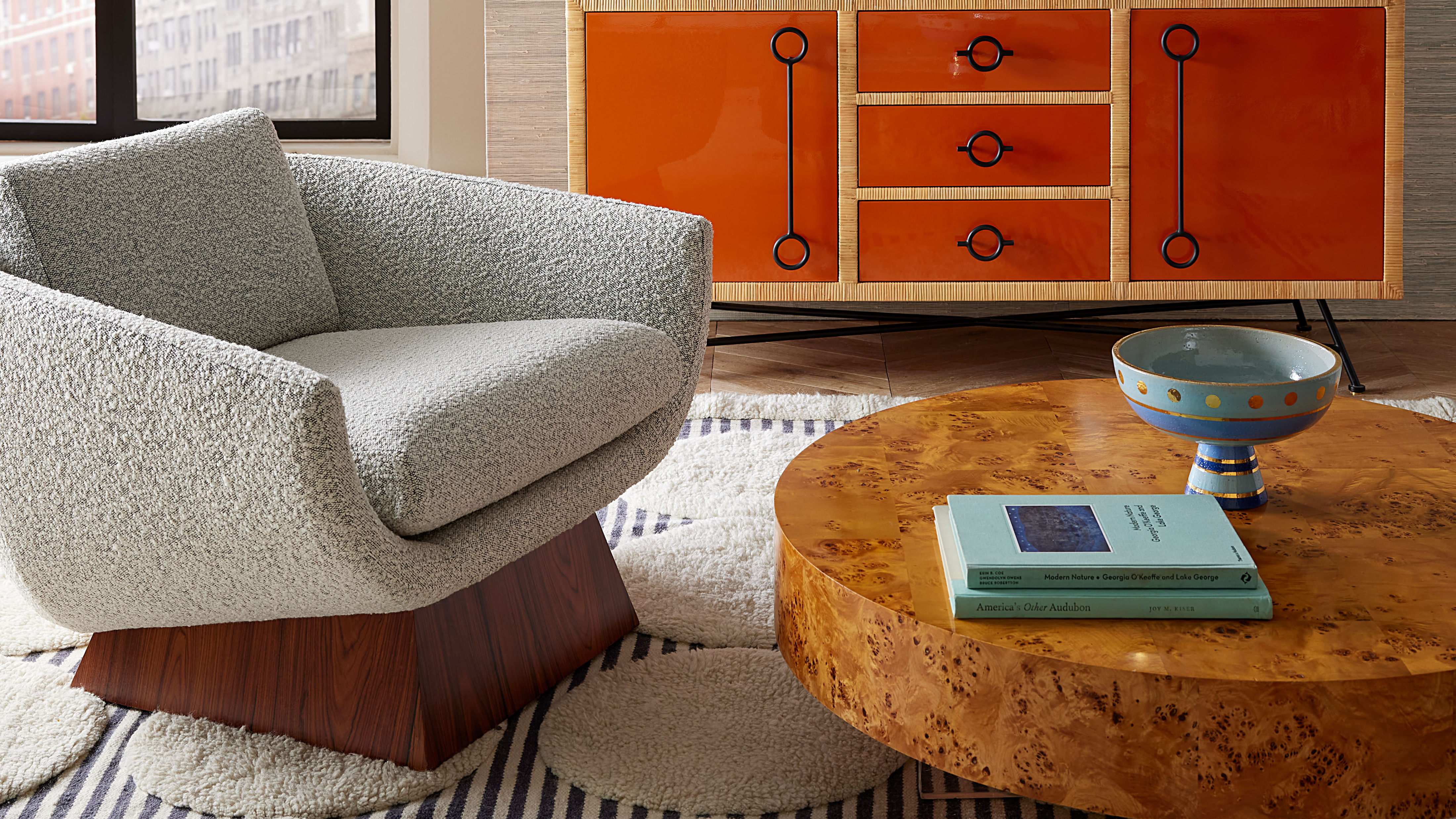 Burl Wood Decor Is 2025’s Most Coveted Comeback — Here’s How to Get the Storied Swirls for Less
Burl Wood Decor Is 2025’s Most Coveted Comeback — Here’s How to Get the Storied Swirls for LessIrregularity is the ultimate luxury, but you don’t need an antiques dealer to find it
By Julia Demer Published
-
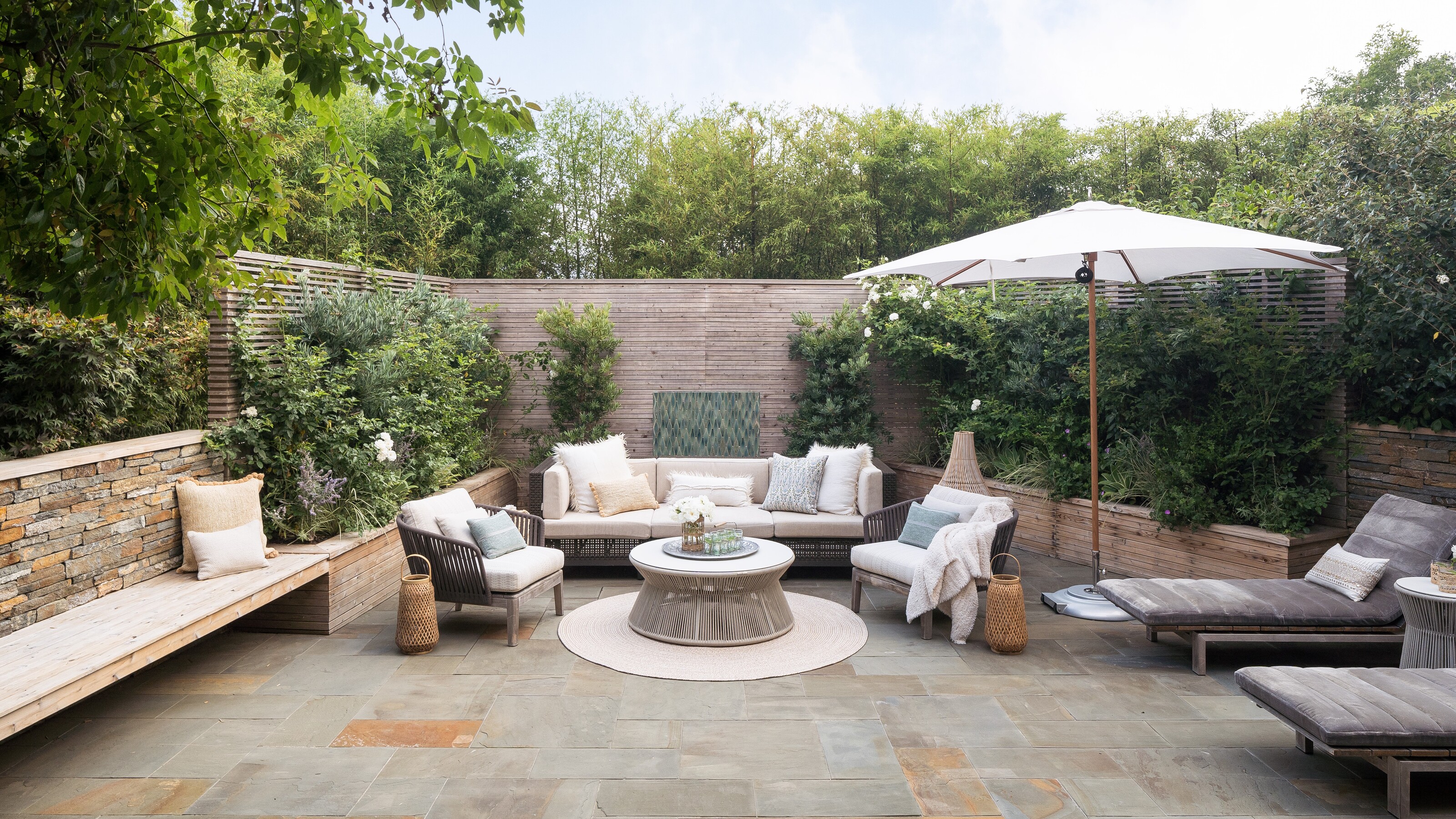 5 Garden Features That Instantly Add Value to Your Home — While Making Your Outdoor Space More Practical, too
5 Garden Features That Instantly Add Value to Your Home — While Making Your Outdoor Space More Practical, tooGet to know all the expert tips and tricks for making your backyard a standout selling point for your home.
By Maya Glantz Published
